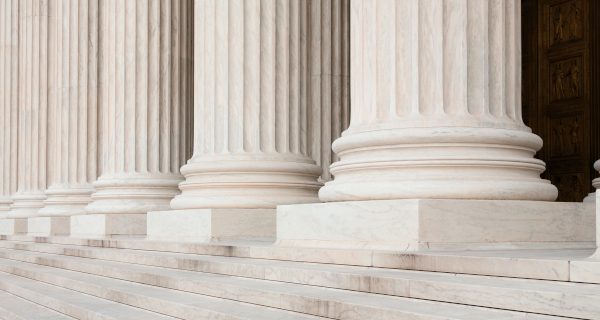Procure
The detailed Green Procurement Compilation featuring products and services has been retired. Use this page to identify and link to the remaining statutorily required purchasing programs.
Background
SFTool's Green Procurement Compilation (GPC) provided sustainable acquisition resources for the federal acquisition community. It consolidated information on environmental purchasing programs in one location, including applicable products, relevant legal requirements, and more, making it easy for buyers to identify each program that applies to a specific product or service.
In February 2025, the General Services Administration issued FAR Class Deviation CD-2025-05, Revoked Executive Order 14057 for Federal Sustainability and Ending Procurement and Forced Use of Paper Straws (Supplement 1)![]() . This deviation revises multiple subparts of FAR Parts 23 and 52 and applies to all new GSA solicitations and contracts. As a result, the Green Procurement Compilation scaled back to this page with the remaining purchasing programs.
. This deviation revises multiple subparts of FAR Parts 23 and 52 and applies to all new GSA solicitations and contracts. As a result, the Green Procurement Compilation scaled back to this page with the remaining purchasing programs.
Environmental Purchasing Programs
Federal agencies are required to buy sustainable products and services to the maximum extent practicable (see FAR 23.103![]() and 23.105
and 23.105![]() for additional information, including exceptions). FAR 23.104(c)
for additional information, including exceptions). FAR 23.104(c)![]() provides direction to ensure that federal agencies comply with statutory purchasing program requirements. Statutory purchasing programs are listed below.
provides direction to ensure that federal agencies comply with statutory purchasing program requirements. Statutory purchasing programs are listed below.
USDA BioPreferred .jpg)
Visit Program Site: BioPreferred![]()
Product types: building materials and finishes, construction supplies, cleaning products, shipping and transportation, landscaping supplies, etc.
The U.S. Department of Agriculture (USDA) manages the BioPreferred program. BioPreferred includes both a preferential procurement program for Federal agencies and their contractors and a voluntary labeling program for the broad scale consumer. Under the Federal procurement preference program, USDA designates categories of biobased products. Federal agencies and their contractors are then required to give preferential consideration to biobased products in the designated BioPreferred product categories when making purchases. As a part of the designation process, USDA establishes the minimum biobased content for the category. The technical, health, and environmental characteristics of these products are also considered. BioPreferred products are required under FAR 23.103.
Buying BioPreferred products? Review FAR provision 52.223-1, and clauses 52.223-2 and 52.223-23 for applicability. Note: Federal agencies are directed to prioritize items that are both CPG and BioPreferred; however, in instances when federal agencies must choose between the two programs, and both items meet the agency's needs, federal agencies are directed to procure the CPG item.
Energy Star 
Visit Program Site: ENERGY STAR![]()
Product types: appliances, office electronics, construction supplies, HVAC and mechanical products, and lighting
ENERGY STAR is a joint program of the U.S. Environmental Protection Agency (EPA) and the U.S. Department of Energy (DOE). The ENERGY STAR label helps consumers identify energy efficient products and practices in over 60 product categories for the home and office. Products earn the ENERGY STAR label by meeting the energy efficiency requirements set forth in ENERGY STAR product specifications. These products deliver the same or better performance as comparable models while using less energy and saving money. See ENERGY STAR's calculators![]() to help determine cost savings. ENERGY STAR products are required under FAR 23.103.
to help determine cost savings. ENERGY STAR products are required under FAR 23.103.
Buying ENERGY STAR products? Review clause 52.223-23 for applicability.
FEMP-designated 
Visit Program Site: FEMP![]()
Product types: boilers, chillers, ice makers, and lighting
The U.S. Department of Energy's Federal Energy Management Program (FEMP) sets minimum energy efficiency requirements for product categories that have the potential to generate significant Federal energy savings.FEMP does not purchase, recognize, endorse, or otherwise identify specific energy-efficient products for Federal procurement. Instead, FEMP identifies energy efficiency requirements for a category of products, which is typically an energy consumption level within the upper 25% of the product category. Products that meet FEMP-designated efficiency requirements are in the upper 25% of their class in energy efficiency and may be assumed to be life cycle cost effective. FEMP-designated products are required by FAR 23.103.
Buying FEMP products? Review clause 52.223-23 for applicability.
FEMP Low Standby Power 
Visit Program Site: FEMP Low Standby![]()
Product types: computers, telephones, and audio/video equipment
FEMP also maintains a list of products that meet FEMP-designated standby power requirements. These are electronic products that consume electricity even when they appear to be turned off. For many product categories, the ENERGY STAR program considers standby energy use. However, for certain product categories identified by FEMP, federal buyers must ensure that purchases meet both ENERGY STAR and low standby power requirements. Electronic products not listed by FEMP must meet a standby power level of 1 watt or less unless such a product is not available or is not cost effective in the intended application. In that case, the buyer should seek a product with the lowest standby power level available. FEMP low standby power products are required by FAR 23.103.
Buying FEMP Low Standby Power products? Review clause 52.223-23 for applicability.
EPA Comprehensive Procurement Guidelines (CPG) 
Visit Program Site: CPG![]()
Product types: building materials and finishes, construction supplies, cleaning products, furniture, office supplies, shipping and transportation, landscaping supplies, etc.
Under the Comprehensive Procurement Guideline (CPG) program, the U.S. Environmental Protection Agency (EPA) designates products that are or can be made with recovered materials, and recommends practices for buying these products. Once a product is designated, procuring federal agencies are required to purchase it with the highest recovered material content level practicable. Buying recycled content products helps to ensure that the materials collected in home and office recycling programs will be used again in the manufacturing of new products. CPG products are required under FAR 23.103.
Buying CPG products? Review FAR provision 52.223-4![]() and clauses 52.223-9
and clauses 52.223-9![]() and 52.223-23 for applicability. Note: Federal agencies are directed to prioritize items that are both CPG and BioPreferred; however, in instances when federal agencies must choose between the two programs, and both items meet the agency's needs, federal agencies are directed to procure the CPG item.
and 52.223-23 for applicability. Note: Federal agencies are directed to prioritize items that are both CPG and BioPreferred; however, in instances when federal agencies must choose between the two programs, and both items meet the agency's needs, federal agencies are directed to procure the CPG item.
EPA Significant New Alternatives Policy (SNAP) 
Visit Program Site: SNAP![]()
Product types: refrigeration and HVAC products, cleaning products, fire suppression supplies, aerosols, inks, etc.
The Significant New Alternatives Policy (SNAP) Program is the U.S. Environmental Protection Agency’s (EPA's) program to evaluate and regulate substitutes for the ozone-depleting chemicals that are being phased out under the stratospheric ozone protection provisions of the Clean Air Act. Under the SNAP Program, EPA publishes a list of acceptable and unacceptable substitutes for ozone-depleting substances based on a specific product end-use. Substitutes are reviewed on the basis of ozone depletion potential, flammability, toxicity, occupational health and safety, as well as contributions to global warming and other environmental factors. Acceptable substitutes have been determined to reduce overall risk to human health and the environment. The SNAP Program does not endorse specific products manufactured by specific companies. SNAP substitutes are required by FAR 23.103.
Buying SNAP products? Review clause 52.223-11![]() , 52.223-12
, 52.223-12![]() , 52.223-20
, 52.223-20![]() , 52.223-21
, 52.223-21![]() , and 52.223-23 for applicability.
, and 52.223-23 for applicability.
Procurement Topics
Resources
Training
- DOE | Download the Sustainable Acquisition Training Resources

- DOE | Download the Sustainable Acquisition Training Inventory

- WBDG.org | DOE Federal Energy Management Program (FEMP) Contracting for Efficiency: In-Depth Training for Contracting Officers

- DOE FEMP | Take Five

Recognition Programs
Consider recognizing successful projects through an awards program:
Archived Data
If your contract refers to earlier federal procurement requirements, use the buttons below to access archived requirements from December 2024:




